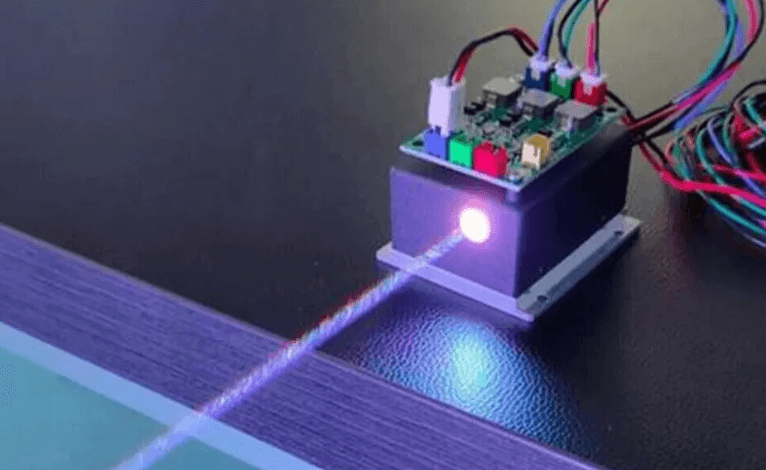Applications of RGB Laser Module in Modern Technology

Introduction to Advanced Light Sources
Light-based technologies are shaping communication, entertainment, medicine, and research in ways that were once unimaginable. Among the most significant innovations is the rgb laser module, a compact device that integrates red, green, and blue lasers into a single system. By combining these three primary colors of light, the module produces a full spectrum of visible colors with exceptional brightness and clarity. This makes it highly valuable for applications where precision, efficiency, and vivid output are required.
Understanding the Concept of an RGB Laser Module
An rgb laser module is an integrated optical device that merges three different wavelength laser diodes into one compact housing. Each diode emits a specific color—red, green, or blue—which, when combined, generate white light or other mixed colors. Unlike traditional light sources such as LEDs, laser modules provide highly coherent beams with greater brightness and directionality. The ability to control each channel independently also allows for fine-tuned color adjustment in demanding applications.
Structural Design and Core Components
The construction of an rgb laser module involves multiple laser diodes, a combining optic, cooling mechanisms, and electronic drivers. The diodes are aligned to ensure accurate beam overlap, while optical lenses manage focus and divergence. Heat sinks and active cooling systems are often integrated to prevent overheating, which can affect performance. Electronic circuits regulate the output of each laser, ensuring stable operation and long lifespan. This precise engineering ensures that the module delivers consistent results in high-performance environments.
See also: AI in Education: How Technology Is Shaping Future Classrooms
Advantages Over Traditional Light Sources
The rgb laser module offers several benefits when compared with conventional lighting and projection systems:
- High brightness: Produces intense, concentrated light that travels over long distances.
- Color precision: Allows exact control over color mixing and shade reproduction.
- Energy efficiency: Requires less energy than many traditional sources for the same brightness.
- Compact design: Provides powerful performance in a small form factor.
- Durability: Built for long service life, even in demanding conditions.
These advantages explain why industries are steadily adopting laser-based modules over older lighting technologies.
Role in Entertainment and Display Systems
One of the most popular applications of the rgb laser module is in entertainment. Laser projectors, stage lighting, and large-scale displays rely on these devices to create vivid visual experiences. Unlike conventional projectors, which often struggle with color accuracy, laser-based systems provide crisp and vibrant images. Concerts, theaters, and theme parks use these modules to deliver immersive experiences with unmatched brightness and clarity.
Applications in Communication and Data Transmission
Beyond entertainment, the rgb laser module also plays a role in optical communication systems. By modulating light at different wavelengths, it supports high-speed data transmission across optical fibers. This makes it useful in next-generation telecommunication systems that require reliable and efficient data transfer. In free-space optical communication, where data is transmitted through the air using light beams, rgb modules can enable compact and effective systems.
Use in Scientific and Medical Fields
In scientific research, the rgb laser module is essential for spectroscopy, fluorescence imaging, and optical experiments that require precise wavelength control. Medical imaging systems also benefit from its accuracy, as different wavelengths can penetrate tissues at varying depths. Surgeons use laser-based systems for precise cutting and therapeutic treatments, where control over wavelength and power is critical. These applications demonstrate the versatility of the module in improving healthcare and research outcomes.
Integration in Consumer Electronics
Recent years have seen the rgb laser module being integrated into consumer devices such as pico projectors, virtual reality headsets, and augmented reality glasses. Its compact size and ability to produce high-quality images make it a natural fit for portable electronics. As the demand for lightweight, immersive technology grows, these modules are expected to become standard in many consumer-grade products.
Challenges in Implementation
Despite its many advantages, the rgb laser module also faces certain challenges. Cost remains one of the primary barriers to widespread adoption, as manufacturing high-quality laser diodes and precision optics can be expensive. Managing heat and ensuring stability over long operational periods are also concerns. In addition, safety regulations surrounding laser devices must be strictly followed, as high-intensity beams can pose risks if not properly controlled.
Future Trends and Developments
The future of rgb laser modules is promising, with ongoing research focusing on improving efficiency, reducing costs, and enhancing rgb laser module integration with other technologies. Developments in semiconductor materials are expected to produce more reliable and affordable laser diodes. Miniaturization trends will also support the inclusion of these modules in wearable technology, holographic displays, and advanced medical instruments. As industries seek higher performance and better visual quality, these modules will play a central role in meeting global technological demands.
Conclusion
The rgb laser module has emerged as a versatile and powerful tool across multiple industries, from entertainment and telecommunications to healthcare and consumer electronics. Its ability to provide high brightness, precise color control, and compact design sets it apart from conventional light sources. While challenges in cost and heat management remain, innovations in materials and manufacturing are paving the way for broader adoption. As the demand for advanced optical solutions grows, the rgb laser module will continue to shape the future of technology, delivering efficiency, precision, and brilliance in every application.



